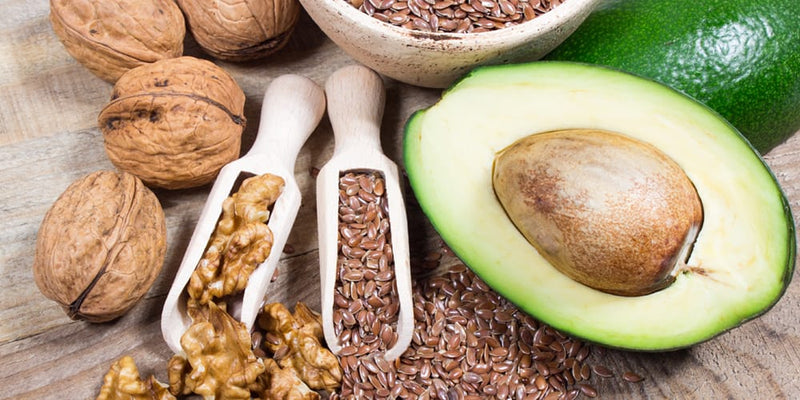Published on September 1, 2021
This fall, make healthy habits part of your everyday
BBQ season is winding down. That means the days of throwing something on the grill and calling it dinner are over – it’s time to get back into proper meal planning and regular exercise routines. Sound daunting? Good news, it doesn’t have to be.
It’s true that getting back on track takes time and planning, but the good news is that developing healthy eating habits can lead to a better balance of all things life and work. Don’t be too hard on yourself if at first you had a hard time meeting your goals – studies show that permanent and positive lifestyle change is possible even if you miss a day here and there.[1].
To get a head start on a healthy eating and exercise routine for the fall, follow these tips on the ‘how to’ for enjoying all the benefits of making a healthy routine a part of your everyday.
- Build routines with intention and the (right) attitude.
Most of us have some healthy habits we’d like to make permanent. Converting a habit, which needs cues or reminders, into a reliable routine, which doesn’t, can add daily structure[2] that benefits everyone in a household[3].
Research shows converting habit into routine involves four stages: a conscious decision to change, goal-based actions, and motivated repetition, which over time, evolve into automatic routine. Keeping new routines in sync with your household’s natural flow will help the process be successful. Rest assured, your sleep, work, social and family times, and dinner table will be better for it!
2. Rethink your approach to mealtimes.
Who hasn’t heard the question “What’s for dinner?” and inwardly cringed? A good place to think about change, particularly post-summer, is around meals. Creating consistent food-based routines can help reduce the stress of scrambling to see what’s in the fridge or perusing take-out menus.
Most of us absorbed mealtime practices at childhood family tables, yet today’s demands around work and family afford little opportunity for a sit-down routine that puts food and nutrition first[4]. To develop a healthy eating plan that prioritizes flavour and variety, take time to think about your kitchen—its tools, the pantry, what’s usually in your fridge, and how often you like to fire up the stove—so your plan will match your lifestyle. Work towards a weekly eating routine that includes meals comprised of three food groups—50% non-starchy vegetables, 25% half lean protein and 25% healthy carbohydrates[5]—and plan meals with similar ingredients closer together.
- Plan healthy meals around nutrition and flexibility.
Once you’ve rethought your mealtime habits, take it one step at a time to develop a weekly meal schedule that includes both eat-in and take out options, to suit your lifestyle.
Although planning takes up front time and energy, the results can deliver better, healthier choices, cost savings, reduced food waste and less mealtime stress. Start by writing down and assessing your ideas, recipes, and how much time you have for cooking, depending on the day, so you can build in on-the-fly flexibility for busy, active days. Variety being the spice of life, be adventurous and try new things. Remember fresh is better than frozen (use fresh ingredients first), prep as much as you can ahead of time, and keep a grocery list everyone can see and add to[6].
We all know change isn’t easy, but a foundation based on healthy routines has wonderful side-effects. Knowing what is ahead can ease transitions from leisure to work time and keep daily life humming along smoothly. Talk to your naturopathic doctor or family doctor before making any major changes to your diet or exercise routine. Remember, too, to give yourself and others the occasional pat on the back for successfully following through on shifts into healthy routines. Research shows that encouragement keeps the good change going![7]
[1] Rippe JM. Lifestyle Medicine: The Health Promoting Power of Daily Habits and Practices. Am J Lifestyle Med. 2018;12(6):499-512.
[2] Mayo Clinic. Building routines for going back to school. 2018 [cited July 4, 2021]; Available from: https://newsnetwork.mayoclinic.org/discussion/building-routines-for-going-back-to-school/
[3] Cátia Sousa & Gabriela Gonçalves (2021) Back to work bang! Difficulties, emotions and adjustment strategies when returning to work after a vacation, The International Journal of Human Resource Management, 32:10, 2242-2263.
[4] Jastran MM et al. Eating routines. Embedded, value based, modifiable, and reflective. Appetite. 2009 Feb;52(1):127-36.
[5]Mayo Clinic. Nutrition and Health Eating. 2020 [cited July 4, 2021]; Available from: https://www.mayoclinic.org/healthy-lifestyle/nutrition-and-healthy-eating/in-depth/create-healthy-eating-routine/art-20308349
[6] Public Health Agency of Canada. 2021. [cited July 4, 2021]; Available from: https://food-guide.canada.ca/en/healthy-eating-recommendations/cook-more-often/plan-what-you-eat/
[7] Gardner B, Lally P, Wardle J. Making health habitual: the psychology of 'habit-formation' and general practice. Br J Gen Pract. 2012;62(605):664-666. doi:10.3399/bjgp12X659466



